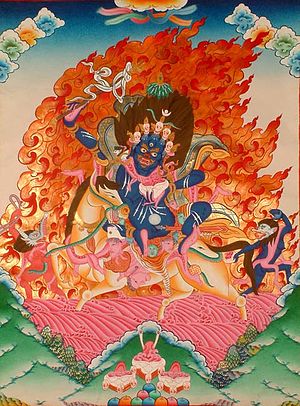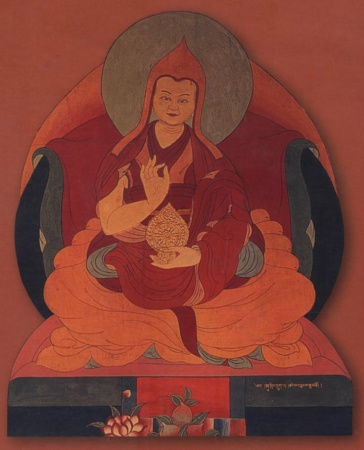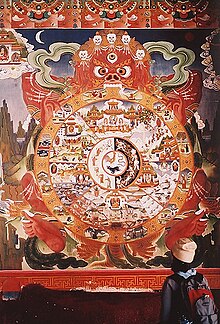Tawang Monastery is the largest Buddhist monastery in India and the second largest in the world, making it the most important site of pilgrimage in India for Buddhists. Also known as Galden Namgey Lhatse which literally means 'celestial paradise in a clear sky', the beautiful monastery truly lives up to its name.

Tawang Monastery, located in Tawang city of Tawang district in the Indian state of Arunachal Pradesh, is the largest monastery in India and second largest in the world after the Potala Palace in Lhasa, Tibet. It is situated in the valley of the Tawang River, near the small town of the same name in the northwestern part of Arunachal Pradesh, in close proximity to the Tibetan and Bhutanese border. The monastery is three stories high. It is enclosed by a 925 feet (282 m) long compound wall. Within the complex there are 65 residential buildings. The library of the monastery has valuable old scriptures, mainly Kangyur and Tengyur.
Read the interesting stories behind the establishment of this Monastery:-
First Story: -
Three legends are narrated to the establishment of the monastery. In the first legend it is said that location of the present Monastery was selected by a horse which belonged to Merag Lama Lodre Gyatso who was on a mission assigned to him by the 5th Dalai Lama to establish a Monastery. After an intense search, when he failed to locate a suitable place, he retired into a cave to offer prayers seeking divine intervention to choose the site. When he came out of the cave, he found his horse missing. He then went in search of the horse and finally found it grazing at the top of a mountain called Tana Mandekhang, which in the past was the palace of King Kala Wangpo. He took this as a divine and auspicious guidance and decided to establish the monastery at that location. Seeking the help of the local people, Mera Lama established the monastery at that location in the latter part of 1681.

A Thangka of Palden Lhamo Guardian Deity of the Monastery
Second Story: -
The second legend of the derivation of the name Tawang is linked to Terton Pemalingpa, diviner of treasures. At this location, he is stated to have given "initiations" of Tamdin and Kagyad, which resulted in the name "Tawang". ‘Ta’ is an abbreviated form for "Tamdin" and ‘Wang’ means "initiation".

The 6th Dalai lama
Third Story: -
According to the third legend, a white horse of the Prince of Lhasa had wandered into Monpa region. People, who went in search of the horse, found the horse grazing at the present location of the monastery. The people of the area then worshipped the horse and the location where it was found and venerated it every year. Eventually, to honour the sacred site, the Tawang Monastery was built at the site.

Monastery was consecrated by Dalai Lama XIV
Entrance and outer walls:
At the entrance to the monastery there is colourful gate structure, known as the Kakaling, which is built in the shape of a "hut-like structure", with side walls built of stone masonry. The roof of the Kakaling features mandalas, while the interior walls have murals of divinities and saints painted on them. A distinctive mural, the ninth mural from the southwest west corner of the southern wall, is of Ningmecahn, the protector deity of the Bon religion, who is considered the guardian deity of the Tawang region. Ahead of the main gate of the Kakaling, to its south, is another entry, an open gate.

The Manadala at the "Kakaling", the entry gate to the monastery
The main entrance to the monastery, to the south of the open gate, has massive doors fitted on the northern wall. This outer wall is 925 feet (282 m) in length, with heights varying from about 10–20 feet (3.0–6.1 m). Apart from the main gate, the southern side of the monastery has another entry gate, which also has a massive door. Nearer to the gate, there are two small openings in the wall which provide the complete view of the exterior part of the eastern wall that connects to the Kakaling. According to a legend, the 5th Dalai Lama had given a roll of thread to be bound around the walls of the monastery to denote the extent to which the monastery should be built.
Main buildings:
The monastery, built like a large mansion, is triple storied with a large assembly hall, ten other functional structures and with 65 residential quarters for students, Lamas and monks. The monastery has a school and its own water supply facility, and a centre for Buddhist cultural studies.
Buddha in the Dukhang.
The ground floor of the monastery is where ritual dances are performed. The walls of the monastery also have a profusion of thangkas of Buddhist deities and saints. Curtains are suspended over the balcony and these are painted with Buddhist symbols. Within the precincts of the monastery there are residential buildings to accommodate about 700 monks, which now houses 450 monks. The abbot of the monastery resides in a house located near the gate at the southeastern corner of the monastery.
Main temple:
The main temple in the monastery, to the west of the entry gate, is known as the Dukhang ('Du' means "assembly" and 'Khang' means "building"). It was built in 1860-61. A large image of Buddha of 18 feet (5.5 m) height is deified; it is gilded and decorated, and is in a lotus position. This image is on the northern face of the assembly hall and is installed over a platform and its head extends up to the first floor. Next to the Buddha image there is a silver casket that holds a special thangka of the goddess Sro Devi (Palden Lhamo), which is the guardian deity of the monastery.

View of Tawang Monastery
It is said that it was painted with the blood drawn from the nose of the 5th Dalai Lama, which renders an ethereal "living quality" to the thanka. This thangka image, also known as Dri Devi, was donated to the monastery by the 5th Dalai Lama. The main temple fell into a dilapidated condition and was renovated in 2002 in the traditional Buddhist architectural style. It has been exquisitely decorated with paintings, murals, carvings, sculptures and so forth.